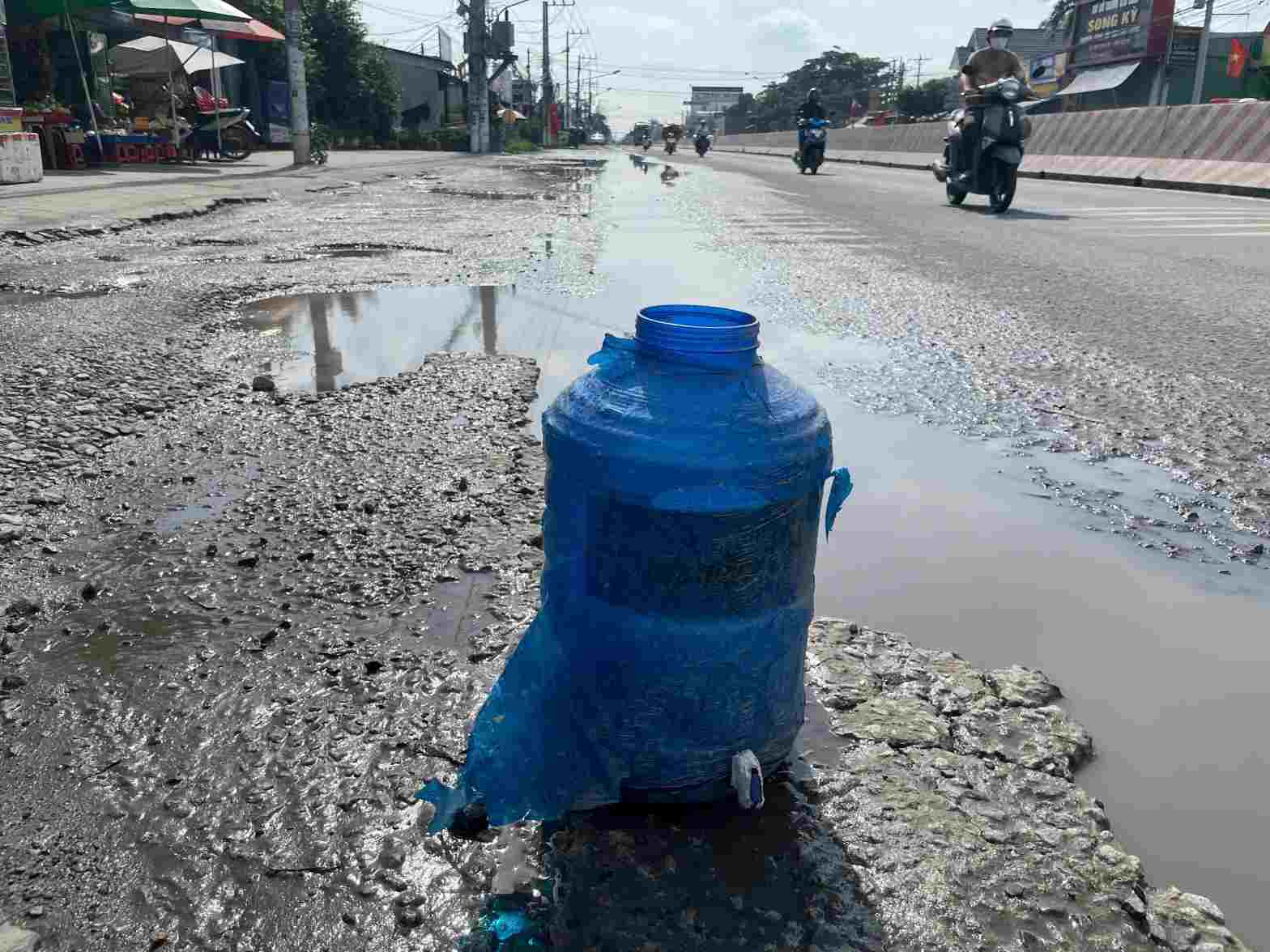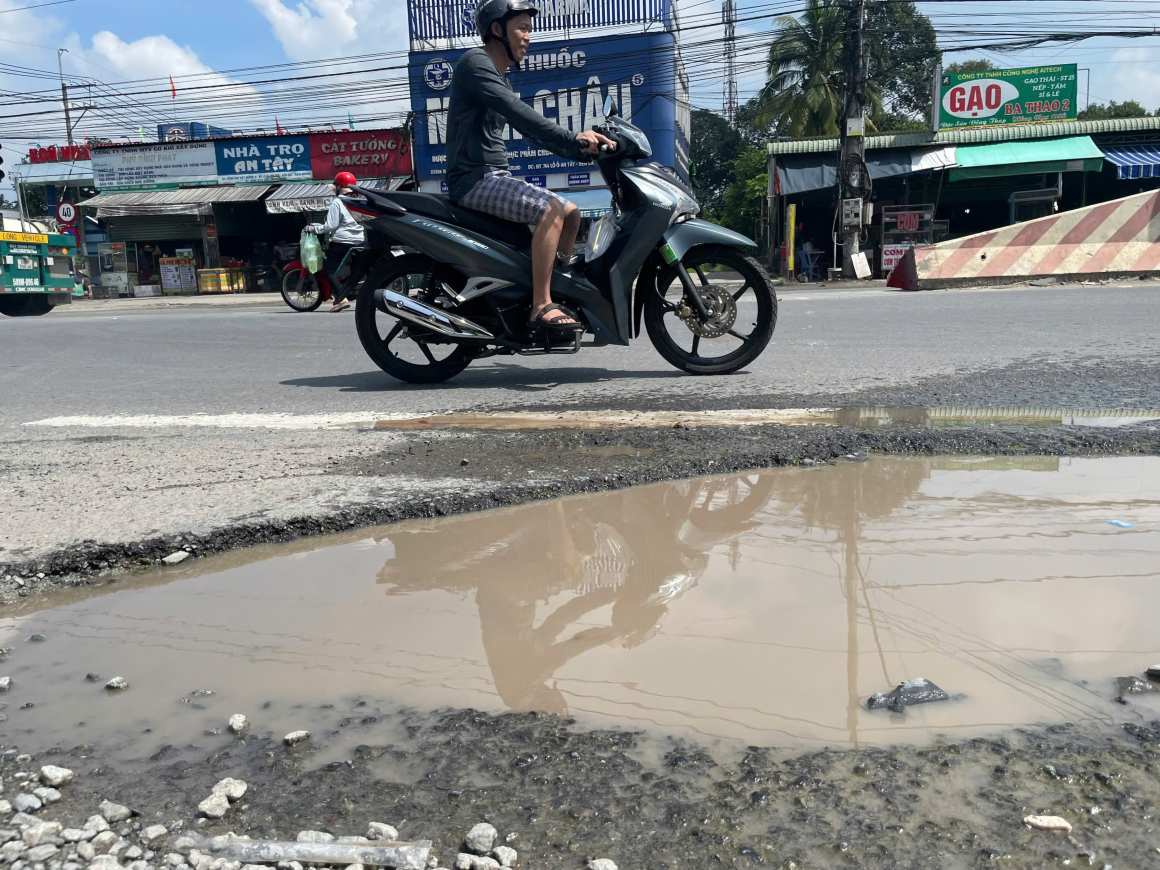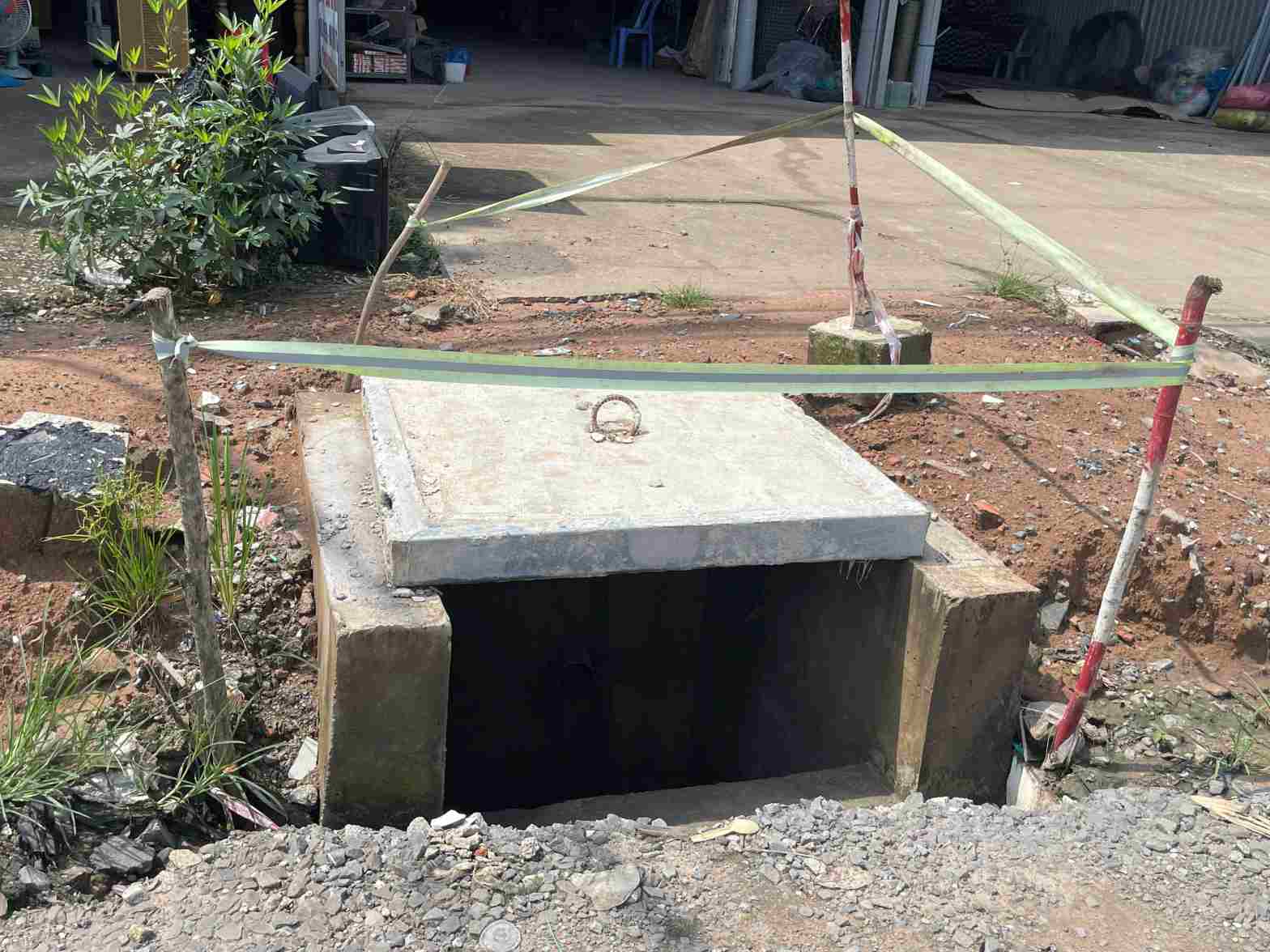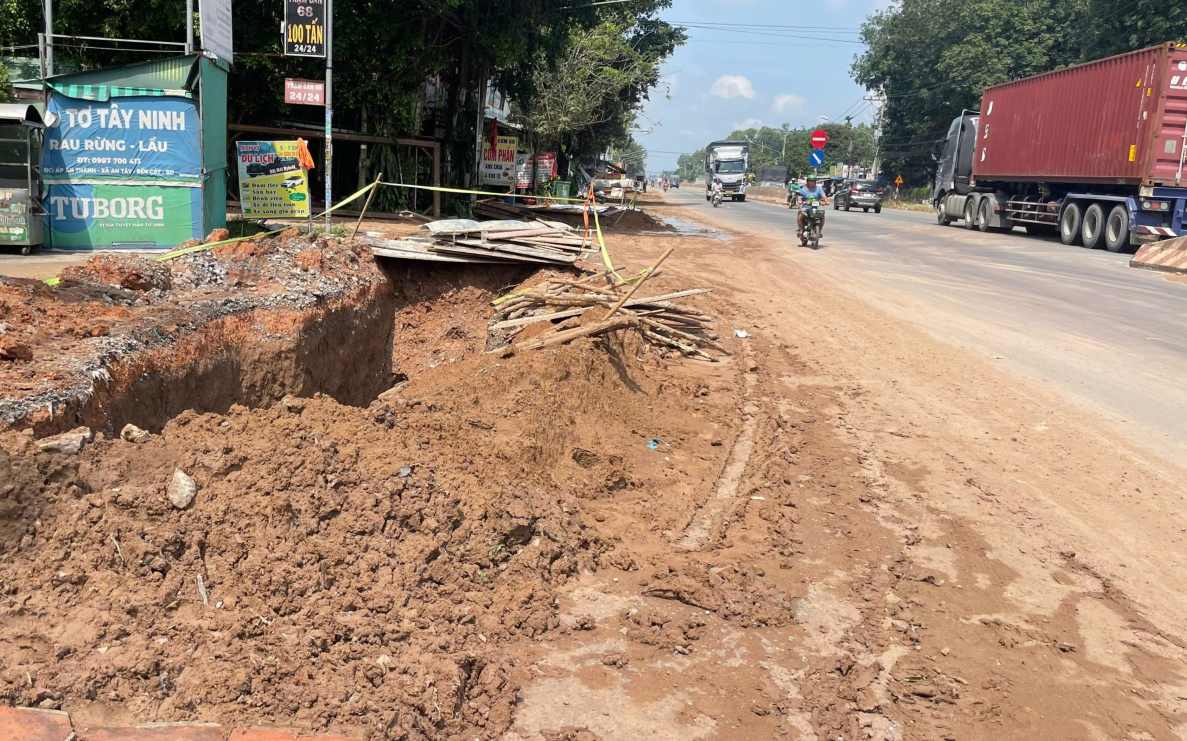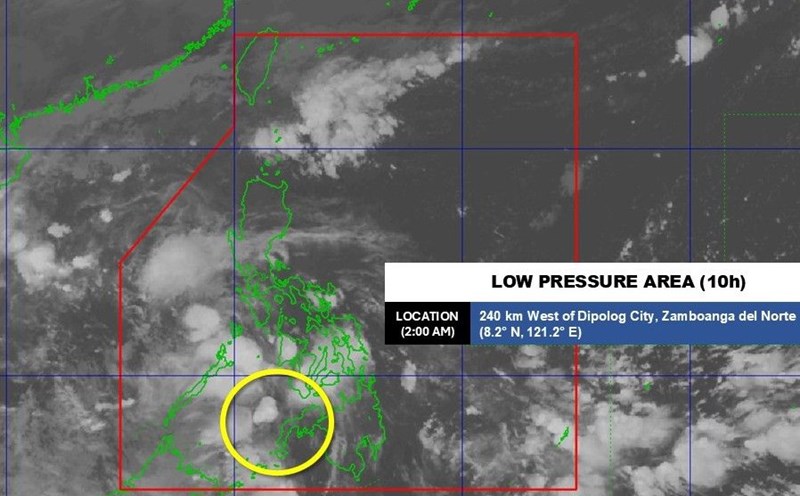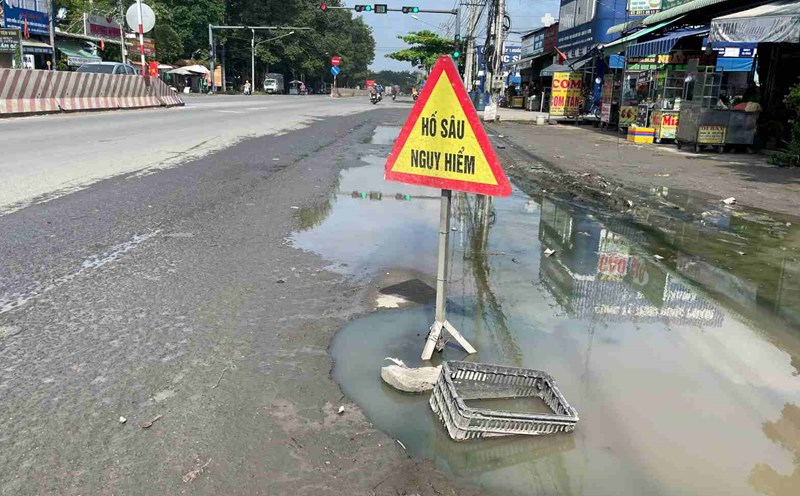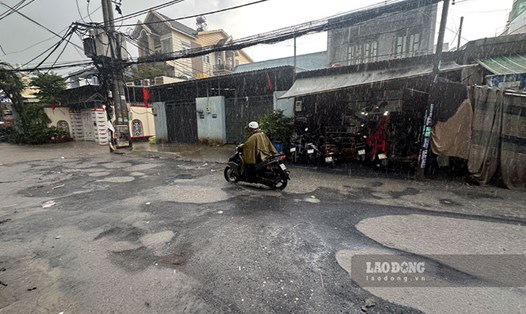DT 744 road, about 50 km long, is a traffic route in the North of Ho Chi Minh City, starting from National Highway 13 ( Chanh Nghiep ward), ending at Dau Tieng commune. The road runs along the Saigon River through Chanh Hiep, Phu An wards, Tay Nam ward and Dau Tieng commune.
In recent years, some sections have degraded, the road surface has been damaged, and deep holes have appeared, posing a danger to people participating in traffic.
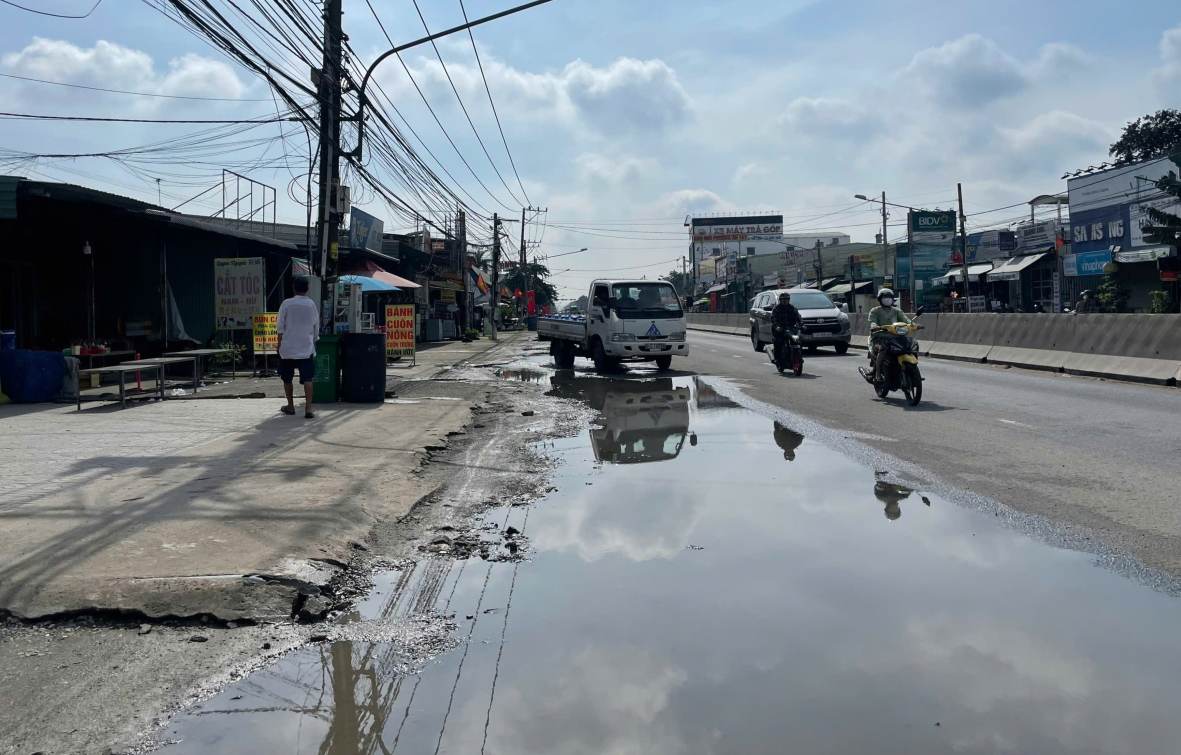
Recorded in the section passing through An Tay market, Tay Nam ward (formerly An Tay ward, Ben Cat city, Binh Duong province) was most damaged. Although it is not raining, the road is still flooded. Some points have "potholes" and deep holes. In the direction from Tay Nam ward to Dau Tieng commune, there are many deeper holes. People brought foam boxes, water bottles and warning signs to place in deep holes to warn of danger.
"The section through An Tay market has not yet been installed with a drainage road. The road surface is lower than that of a resident's house, so water is often stagnant on the road. There are some sections with deep holes, motorbikes passing through here are very susceptible to collapse. In addition, this route has many trucks and containers passing through, so there is a potential risk of accidents," said Mr. N.V.H (42 years old, living in Tay Nam ward).
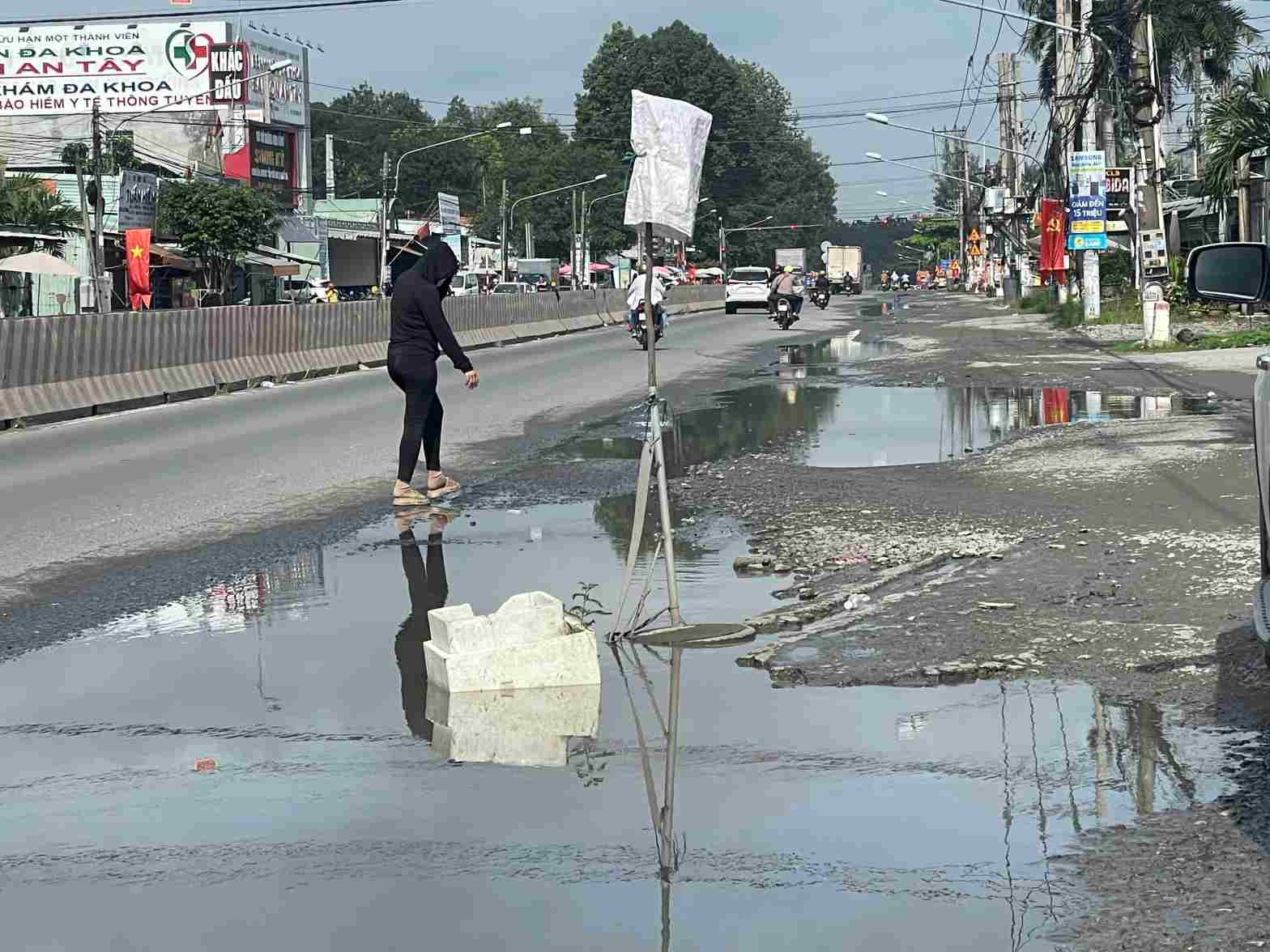
In the direction from Tay Nam ward to Phu An ward, the units are gathering materials to install drainage pipes. Some sections are damaged and have potholes. Some sections of construction land are scattered on the road, causing slippery conditions. At the points where sewers and manholes are built, if they are not carefully fenced off, there are also potential dangers to people.
According to the Ho Chi Minh City People's Committee, there are currently 2 projects on this route including: the project to upgrade and expand DT 744 road from km 12+000 to km 32+000 and the project to build a drainage system on DT 744. Currently, the Ho Chi Minh City People's Committee is urging units to speed up the progress of site clearance compensation, requiring completion in 2025.
